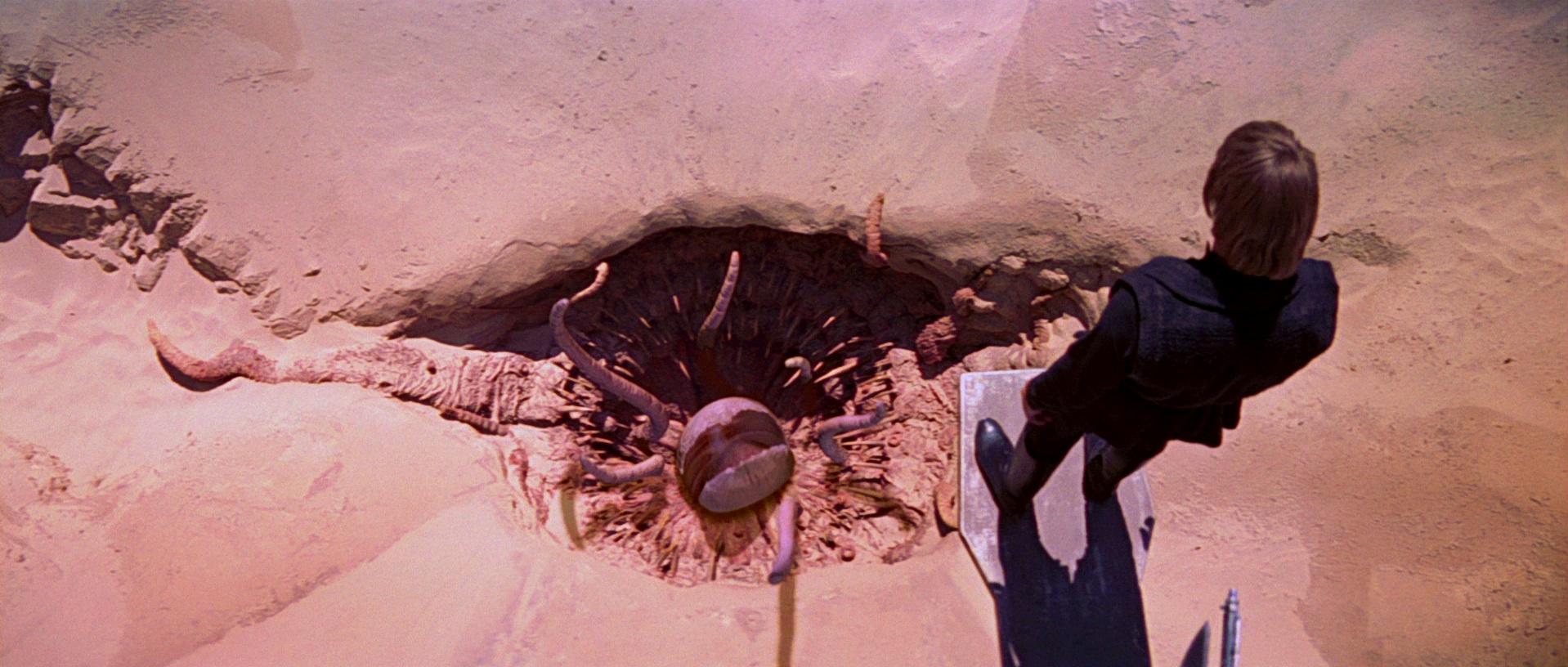Real Biologist Gives In-Universe Breakdown of Sarlacc Biology for “The Tatooine Science Blog Carnival”
Now when do we start on the lightsaber science?

Though not quite as boring as being slowly digested for 1,000 years, it can get boring waiting around for interesting science to happen. So biologists, evolutionary biomechanists, and more have decided to keep their scientific muscles (brains) in shape by examining the incredibly interesting science of the planet of Tatooine in a series of entertaining and educational in-universe blog posts.
Take a trip to the planet that’s farthest from the bright center of the universe with some exhaustive scientific analysis of Tatooine’s many giant beasts, plants, and its ecology. Here’s an excerpt from biology Ph.D. Joe Hanson’s analysis of the all-powerful sarlacc:
While the earliest archival films of the Carkoon sarlacc taken from the ILM Institute’s Lucas expedition do not show evidence of the beak-like tongue or extensive tentacles, later ILM film observations clearly display a single central protrusion and tentacles extending approximately ten meters. Many interplanetary naturalists had accused the Lucas expedition of doctoring their later films to make the creature appear more fearsome, but my study corroborated the presence of the beak and tentacles, and that fear is warranted. My observations suggest the beak is actually a calcified split tongue, likely used to immobilize or paralyze prey by brute force before delivery into the lower digestive chambers.
At its posterior end, deep beneath the sand, extend many feeding tentacles, drawing and storing nutrients from the surrounding soil like a taproot. To my knowledge, this hybridized organ arrangement, both plant and animal in nature, has never before been reported. Reports of sarlacc longevity extend to 50,000 years, although isotopic analysis has yet to verify these claims due to the extreme danger involved in collecting even the smallest tissue sample.
He even went to the trouble to retcon the difference between initial sarlacc footage and later accounts the original films and the special edition trilogy. Using a popular fictional universe is a great way to stir up interest in real science, and it looks like we’ll be returning to Tatooine next year in Episode VII, so you’d best study up if you want to survive.
Here are links to the rest of the posts including information about Luke’s narrowly-escaped profession of moisture farmer, Tatooine’s climate change issues, and more:
Tatooine Intergovernmental Panel on Climate Change – David Ng
Functional Anatomy of Tatooine Megafauna (Hyperspace Transmission Received) – John Hutchinson
Science of Tatooine: Water – Adrienne Roehrich
Cascading Planetary-Wide Ecosystem Effects of the Extirpation of Apex Predatory Krayt dragons on Tatooine – David Shiffman
The Limits of Animal Life on Tatooine – Maggie Koerth-Baker
Tatooine’s Tangled Bank – Plants Evolve in a Galaxy Far, Far Away – Malcolm Campbell
Diary of an Interplanetary Naturalist – The Sarlacc – Joe Hanson
- Two physicists wrote a paper on how the TARDIS would work
- And Dr. Ben Tippett examined movie guitar super powers
- And another physicist searched for time travelers on Twitter
Are you following The Mary Sue on Twitter, Facebook, Tumblr, Pinterest, & Google +?
Have a tip we should know? tips@themarysue.com